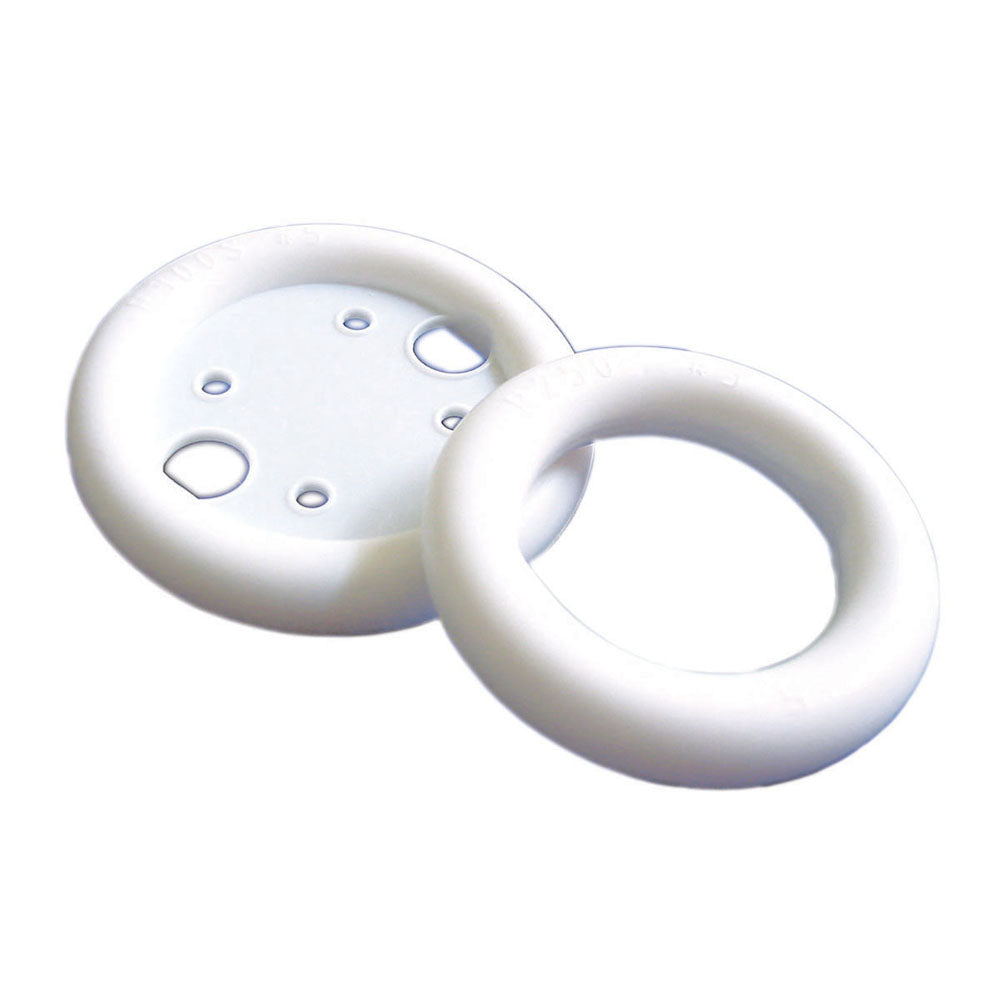Ring pessaries are indeed among the most common types of pessaries used for various gynecological conditions, including pelvic organ prolapse and urinary incontinence. They are typically made of silicone or rubber and are shaped like a doughnut or ring. These pessaries come in different sizes to accommodate variations in anatomy and are often chosen based on the patient's specific needs and the severity of their condition.
The ring pessary works by providing support to the pelvic organs and helping to keep them in their correct position within the pelvis. They are relatively easy to insert and remove and are usually well-tolerated by most patients.
Because of their popularity, ring pessaries are widely available and are frequently prescribed by healthcare providers for the management of pelvic floor disorders. However, it's essential to consult with a healthcare professional to determine the most suitable type and size of pessary for individual needs.
Inserting Ring Pessaries
Fold the selected pessary at the designated notches, ensuring the concavity faces downward. Using the non-dominant hand, gently separate the labia minora posteriorly at the introitus. Hold the folded pessary securely and insert it through the introitus, guiding it into the vagina with a posterior curve. Release the fold, allowing the pessary to spring open to its usual shape. Push it deeply into the vaginal vault. Ensure it is tucked securely behind the pubic bone anteriorly and beneath the cervix (if present) posteriorly.
Removing Ring Pessaries
- Wash your hands thoroughly with soap and water.
- Assume a comfortable position, such as lying down with knees bent or standing with one foot on a stool.
- Gently insert your index and middle fingers into the vagina until you can feel the pessary.
- Hook your fingers around the rim or the removal tab of the pessary.
- Slowly and carefully pull the pessary downward and out of the vagina. Be gentle to avoid discomfort or injury.
- Once removed, clean the pessary with mild soap and water, rinse it thoroughly, and allow it to air dry before storing it.
- Dispose of any disposable pessaries according to the manufacturer's instructions.
- Wash your hands again with soap and water after removal.
If you encounter any difficulties or discomfort during the removal process, or if you're unable to remove the pessary, contact your healthcare provider for assistance.
The content on this website serves as a general summary for public information only. This information is not medical advice, nor does it act as a replacement for professional medical advice, diagnosis, or treatment. For inquiries about a medical condition, it is essential to consult with a doctor or another qualified health professional.



